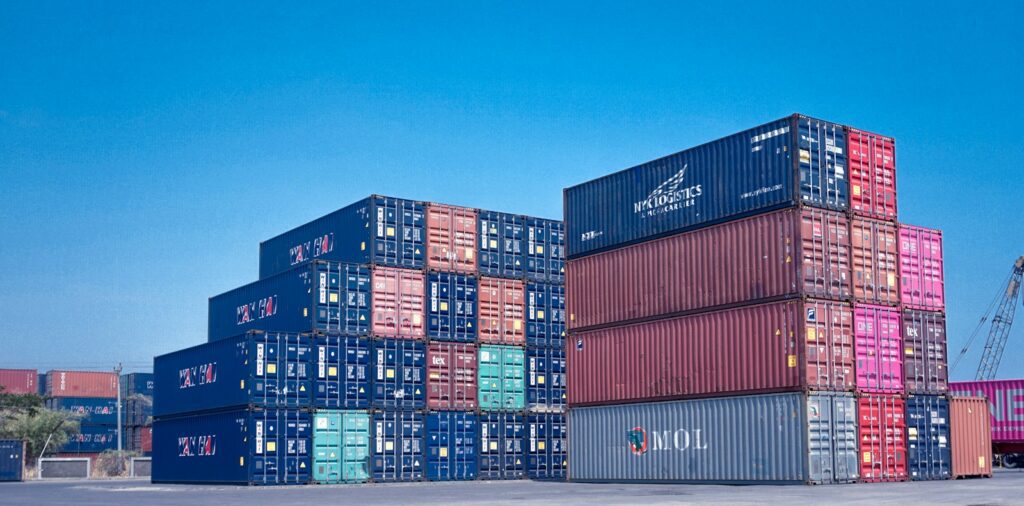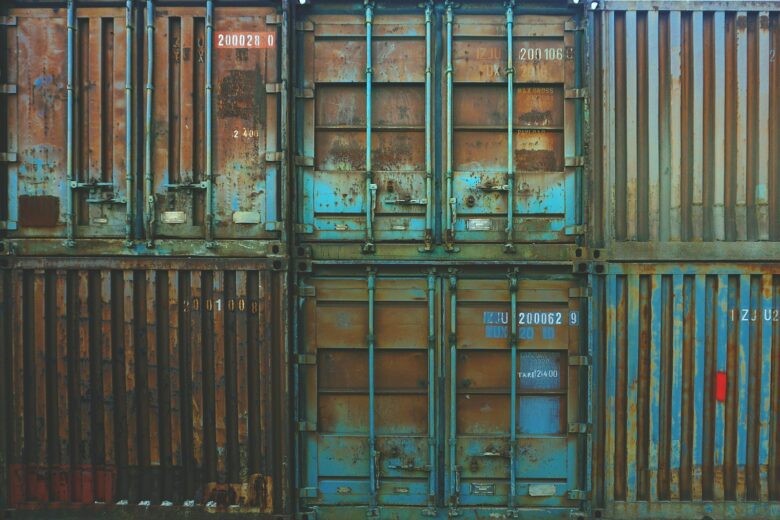Shipping containers have become a popular solution for various storage needs. Whether you use them for shipping goods internationally or as a creative space, it is essential to keep them clean and well-maintained. Cleaning your shipping container before and after use not only helps ensure optimal hygiene but also prolongs its lifespan. In this article, we will explore why cleaning your shipping container is important and provide a step-by-step guide to help you maintain a clean and sanitary container.


Why Cleaning Your Shipping Container is Important
Keeping your shipping container clean is vital for several reasons. Firstly, it helps prevent pests and insects from infesting the container. These unwanted visitors can cause damage to your goods or compromise the integrity of the container itself. Nobody wants to open a container and find their products infested with bugs or rodents. By regularly cleaning your shipping container, you can ensure that it remains a pest-free environment for your valuable cargo.
Secondly, a clean container reduces the risk of contamination. Depending on the items you store, such as food or pharmaceuticals, contamination can lead to severe consequences, both financially and in terms of public safety. Imagine the potential harm that can be caused if a container used to transport food products is not properly cleaned and sanitised. It is essential to maintain strict hygiene standards to prevent any contamination that could harm consumers or result in costly product recalls.
Furthermore, regular cleaning removes dust, dirt, and debris that can accumulate over time. Shipping containers are often exposed to various weather conditions and environmental factors during transportation and storage. This exposure can lead to the buildup of dirt and grime, which not only affects the aesthetics of the container but also poses potential risks. By cleaning the container, you can ensure that it remains in optimal condition, free from any obstructions or contaminants that could hinder its functionality.
In addition to improving the appearance and functionality of the container, regular cleaning also ensures proper ventilation. Dust and debris can clog vents and air circulation systems, leading to inadequate airflow within the container. This can result in increased humidity levels, which in turn can create an environment conducive to mould growth or rust formation. By regularly cleaning your shipping container, you can maintain proper ventilation and prevent the accumulation of moisture, thus safeguarding your cargo from potential damage.
Lastly, maintaining a clean shipping container demonstrates professionalism and attention to detail, which can be a significant advantage for businesses that rely on shipping containers for their operations. A clean and well-maintained container not only reflects positively on your company’s image but also instils confidence in your customers and partners. It shows that you take pride in your work and are committed to providing the best possible service. This attention to detail can set you apart from competitors and contribute to the success of your business.
If you are looking to buy or hire a shipping container in Australia, OZBOX is one of the leading suppliers of new and used shipping containers in Melbourne and beyond. All containers come in sparkling condition and the team will be more than happy to talk to you about shipping container maintenance and cleaning.
Step-by-Step Guide to Cleaning Your Shipping Container
To effectively clean your shipping container, follow these step-by-step instructions:
- Begin by removing any items or debris from inside the container. Clean the floor by sweeping or vacuuming to remove loose dirt and dust.
- Thoroughly examine the container for any indications of damage, such as cracks or leaks. Should you come across any issues, it is crucial to address them promptly in order to prevent any additional harm.
- Using a hose or pressure washer, spray down the interior and exterior of the container to remove loose dirt and grime.
- Apply a suitable cleaning solution to the surfaces of the container. Ensure that the cleaning product is compatible with the container’s materials.
- Scrub the surfaces thoroughly using a stiff brush or sponge. Pay special attention to areas that may be more susceptible to buildup, such as corners or crevices.
- Rinse the container thoroughly with clean water to remove all traces of the cleaning solution.
- Dry the container completely before returning any items or loading new goods. This helps prevent moisture-related issues, such as mould or rust.
Remember, it is essential to follow any specific cleaning guidelines provided by the container manufacturer or shipping company. These guidelines may vary depending on the container’s materials and purpose.
Now, let’s dive deeper into each step to ensure you have a thorough understanding of the cleaning process:
Step 1: Removing Debris
Before you begin cleaning your shipping container, it’s crucial to remove any items or debris that may be inside. This includes sweeping or vacuuming the floor to eliminate loose dirt, dust, or any other particles that may have accumulated over time. By starting with a clean slate, you’ll be able to focus on effectively cleaning the container’s surfaces.
Step 2: Inspecting for Damage
Once the container is free from debris, take a close look at its interior and exterior for any signs of damage. This can include cracks, leaks, or any other structural issues. Identifying these problems early on is essential to prevent further damage during the cleaning process. If you notice any issues, make sure to address them promptly before proceeding.
Step 3: Spraying Down with Water
Using a hose or pressure washer, thoroughly spray down the interior and exterior of the container. This step helps remove loose dirt and grime that may have accumulated over time. Pay attention to hard-to-reach areas and ensure that the water reaches every corner of the container. By doing so, you’ll create a clean foundation for the next steps of the cleaning process.
Step 4: Applying a Suitable Cleaning Solution
After spraying down the container, it’s time to apply a suitable cleaning solution to the surfaces. It is crucial to choose a cleaning product that is compatible with the materials of your shipping container. Different containers may require different cleaning solutions, so make sure to read the manufacturer’s guidelines or consult with the shipping company for recommendations. Applying the right cleaning solution ensures the effective removal of stubborn stains, grease, or any other tough-to-clean substances.
Step 5: Thoroughly Scrubbing the Surfaces
With the cleaning solution applied, it’s time to scrub the surfaces of the container thoroughly. Use a stiff brush or sponge to scrub all areas, paying special attention to corners, crevices, and any other spots that may be more susceptible to buildup. By putting in the effort to scrub every nook and cranny, you’ll ensure a deep and thorough cleaning process.
Step 6: Rinsing with Clean Water
After scrubbing, it’s essential to rinse the container thoroughly with clean water. This step removes all traces of the cleaning solution, ensuring that no residue is left behind. Use a hose or pressure washer to rinse off the surfaces, making sure to reach all areas of the container. By rinsing thoroughly, you’ll leave your shipping container sparkling clean and ready for use.
Step 7: Drying the Container
Before returning any items or loading new goods into the container, it’s crucial to ensure that it is completely dry. Moisture-related issues, such as mould or rust, can occur if the container is not adequately dried. Allow the container to air dry naturally or use fans to speed up the process. Taking the time to dry the container thoroughly will help maintain its integrity and prevent any potential damage.
By following these step-by-step instructions and paying attention to the details, you can effectively clean your shipping container and ensure its longevity. Remember to always refer to any specific cleaning guidelines provided by the container manufacturer or shipping company to ensure you’re using the most appropriate cleaning methods for your container’s materials and purpose.
Common Mistakes to Avoid When Cleaning Your Container
While cleaning your shipping container, be sure to avoid these common mistakes:
- Using abrasive cleaning materials that can damage the container’s surfaces.
- Applying excessive force or pressure when scrubbing, which may cause dents or scratches.
- Using cleaning products that are not compatible with the container’s materials, leading to discolouration or deterioration.
- Ignoring or neglecting regular maintenance and cleaning, which can result in costly repairs or replacements.
By avoiding these mistakes, you can maintain the integrity and cleanliness of your shipping container, ensuring its optimal performance and longevity.
Tips for Maintaining a Clean and Sanitary Shipping Container


In addition to regular cleaning, here are some tips to help you maintain a clean and sanitary shipping container:
- Implement a regular cleaning schedule based on the frequency and nature of container use.
- Consider using environmentally friendly cleaning products to minimize ecological impact.
- Install ventilation systems or devices to improve airflow and reduce moisture buildup.
- Inspect the container regularly for signs of damage or wear and address any issues promptly.
- Store goods in appropriate packaging to minimize the risk of spills or leaks.
- Train employees or individuals responsible for handling the container on proper cleaning and maintenance procedures.
By following these tips, you can ensure that your shipping container remains clean, sanitary, and in good condition for years to come.
The Benefits of Regular Cleaning and Maintenance for Your Shipping Container
Maintaining a clean and well-maintained shipping container offers numerous benefits:
- Protection of goods: A clean container helps safeguard your goods from pests, contamination, and damage caused by dirt or moisture.
- Compliance with regulations: Depending on the industry and goods being transported, there may be specific cleanliness and sanitation standards to meet.
- Cost savings: Regular maintenance reduces the risk of expensive repairs or replacements due to neglect or inadequate cleaning.
- Enhanced reputation: Keeping your shipping container in pristine condition reflects positively on your business, impressing clients and partners.
- Improved lifespan: Proper cleaning and maintenance can extend the lifespan of your container, maximising its value and usefulness.
In conclusion, cleaning your shipping container before and after use is crucial for hygiene, longevity, and compliance. By following a step-by-step cleaning guide, avoiding common mistakes, and implementing regular maintenance, you can ensure a clean and sanitary environment for your goods and optimise the performance of your shipping container.
Cleaning Shipping Containers FAQs
Can you pressure wash the inside of a shipping container?
Yes, you can pressure wash the inside of a shipping container. However, it’s important to ensure proper drainage and safety measures to avoid water damage or injury. Please consult a professional if you’re unsure about the process.
Do shipping containers need maintenance?
Yes, shipping containers do require maintenance to ensure longevity. This includes regular inspections for rust or damage, keeping the container well-ventilated and dry to prevent condensation and corrosion, and treating the container with rust-resistant paint if required. Regular maintenance will help to extend the life of the shipping container and ensure it remains safe for use.






























